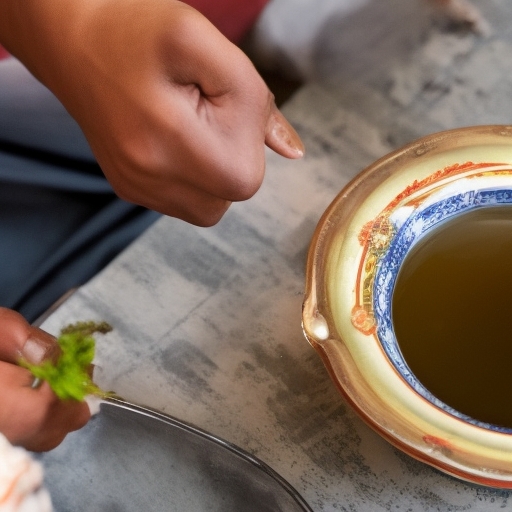Title: Unveiling the Art of Tea-Making in India: A Journey Through Traditional Chai Culture
Introduction
India, a land rich in culture and traditions, is also home to an art that has warmed hearts and souls for centuries – the art of tea-making. Known popularly as ‘Chai’ in India, this brew is more than just a beverage; it symbolizes hospitality, unity, and the vibrant spirit of the Indian subcontinent. This article aims to explore the traditional techniques, unique flavors, and cultural significance of tea-making in India.
The Origins of Chai in India
The history of tea in India can be traced back to the Tang dynasty (618–907 AD), when Buddhist monks brought tea leaves from China to India’s Assam region. However, it was during the British colonial rule that the consumption of tea spread across the country. Over time, the Indian palate evolved, and a distinctive taste profile emerged – the spiced Chai we know today.
The Art of Making Chai (Chai-Masala)
Traditional Indian Chai is not just about boiling tea leaves in water; it’s a symphony of flavors created by blending various spices, herbs, and milk. The primary ingredients include black tea leaves, water, milk, sugar, cardamom, cinnamon, ginger, cloves, and black pepper.
1. First, freshly crushed ginger and cardamom are added to a pot along with water and brought to a boil.
2. Black tea leaves are then added and allowed to steep for a few minutes.
3. The spices used vary from region to region, but the essential ones include cinnamon, cloves, and black pepper. These are added next and left to simmer.
4. Whole milk or cream is added last, giving Chai its rich, creamy texture and enhancing the flavors.
5. Sugar or jaggery (unrefined cane sugar) is added according to taste just before serving.
Regional Variations of Chai in India
India’s vast geography and cultural diversity have given rise to various regional variations of Chai. For instance, the Masala Chai of West Bengal includes bay leaves, star anise, and nutmeg, while Kashmiri Chai uses saffron and dried fruits. In South India, filter coffee (known as ‘kaapi’) rules supreme, but a spiced version called ‘Nannari Cha’ made from sarsaparilla root is also popular.
Cultural Significance of Chai in India
Chai holds immense cultural significance in India. It is a staple beverage served during social gatherings, festivals, and religious ceremonies. The act of offering Chai symbolizes warmth, hospitality, and friendship. During the harsh winter months, a hot cup of Chai becomes a source of comfort and unity. Moreover, Chai breaks down barriers and fosters connections, making it an integral part of Indian society.
The Future of Chai in India and Beyond
As India continues to evolve and globalize, modern interpretations of traditional Chai are emerging. Tea cafes serving innovative Chai blends and infusions can be found across major cities, catering to both locals and tourists alike. The popularity of Indian Chai is also on the rise internationally, with numerous food service outlets adopting this unique brew into their menus.
Conclusion
The art of tea-making in India represents more than just a beverage; it’s a cultural expression that transcends time and space. From the traditional methods to regional variations, Indian Chai continues to captivate hearts around the world. As we celebrate this rich heritage, let us also remember that every sip of Chai embodies the warmth, hospitality, and unity that define the Indian spirit.
👉 [Best Deals on Amazon!](https://amzn.to/abcd) | [Flipkart](https://fkrt.it/xyz123)
